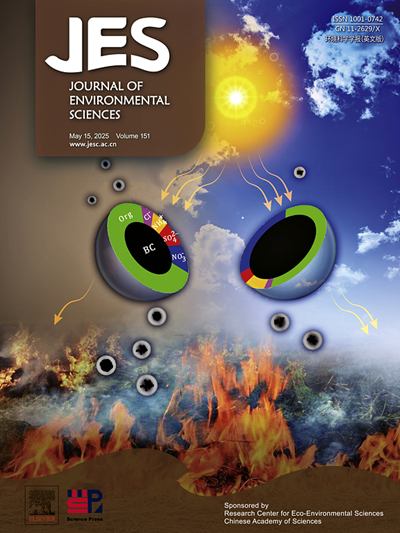基于可解释机器学习的臭氧前体敏感性空间特征识别新方法
IF 6.3
2区 环境科学与生态学
Q1 ENVIRONMENTAL SCIENCES
引用次数: 0
摘要
为了遏制中国日益恶化的对流层臭氧污染问题,快速准确地识别臭氧前体敏感性(OPS)是制定有效的应急O3污染控制策略的重要前提。但是,目前广泛使用的方法,例如统计模型和数值模型,在及时和准确地查明项目事务处方面显示出固有的局限性。在本研究中,我们开发了一种基于极端梯度增强模型、Shapley加性解释(SHAP)算法和挥发性有机化合物(VOC)光化学衰变调整的新方法,以气象和特定污染物监测数据为输入。通过比较氮氧化物(NOx)和VOCs的基本情景和前驱体还原情景的SHAP值差异,将OPS划分为NOx限制、VOCs限制和过渡情景。以2022年秋季持续时间较长的粤港澳大湾区(GBA) O3污染事件为例,研究结果表明,大湾区OPS的时空异质性较大,9 - 10月总体由nox限制向vocs限制转变,且更倾向于中心地区vocs限制,外围地区nox限制。本研究通过比较前体减排前后的SHAP值差异,建立了一种创新的OPS识别方法。我们的方法能够在秒的时间尺度内准确识别OPS,从而为空间特定的O3控制策略的快速指导提供了最先进的工具。本文章由计算机程序翻译,如有差异,请以英文原文为准。

A novel approach to identify the spatial characteristics of ozone-precursor sensitivity based on interpretable machine learning
To curb the worsening tropospheric ozone (O3) pollution problem in China, a rapid and accurate identification of O3-precursor sensitivity (OPS) is a crucial prerequisite for formulating effective contingency O3 pollution control strategies. However, currently widely-used methods, such as statistical models and numerical models, exhibit inherent limitations in identifying OPS in a timely and accurate manner. In this study, we developed a novel approach to identify OPS based on eXtreme Gradient Boosting model, Shapley additive explanation (SHAP) algorithm, and volatile organic compound (VOC) photochemical decay adjustment, using the meteorology and speciated pollutant monitoring data as the input. By comparing the difference in SHAP values between base scenario and precursor reduction scenario for nitrogen oxides (NOx) and VOCs, OPS was divided into NOx-limited, VOCs-limited and transition regime. Using the long-lasting O3 pollution episode in the autumn of 2022 at the Guangdong-Hong Kong-Macao Greater Bay Area (GBA) as an example, we demonstrated large spatiotemporal heterogeneities of OPS over the GBA, which were generally shifted from NOx-limited to VOCs-limited from September to October and more inclined to be VOCs-limited at the central and NOx-limited in the peripheral areas. This study developed an innovative OPS identification method by comparing the difference in SHAP value before and after precursor emission reduction. Our method enables the accurate identification of OPS in the time scale of seconds, thereby providing a state-of-the-art tool for the rapid guidance of spatial-specific O3 control strategies.
求助全文
通过发布文献求助,成功后即可免费获取论文全文。
去求助
来源期刊

Journal of Environmental Sciences-china
环境科学-环境科学
CiteScore
13.70
自引率
0.00%
发文量
6354
审稿时长
2.6 months
期刊介绍:
The Journal of Environmental Sciences is an international journal started in 1989. The journal is devoted to publish original, peer-reviewed research papers on main aspects of environmental sciences, such as environmental chemistry, environmental biology, ecology, geosciences and environmental physics. Appropriate subjects include basic and applied research on atmospheric, terrestrial and aquatic environments, pollution control and abatement technology, conservation of natural resources, environmental health and toxicology. Announcements of international environmental science meetings and other recent information are also included.
 求助内容:
求助内容: 应助结果提醒方式:
应助结果提醒方式:


